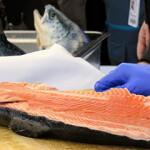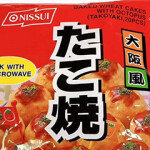Investors eye Russia as next frontier of vannamei market expansion

Despite an economic downturn over the past five years that has resulted in a decrease in income for many of its citizens, Russia is becoming one of the most promising global markets in the world for vannamei shrimp.
Seeing an opportunity, investors are jumping into domestic vannamei aquaculture operations, with three large vannamei farms opening in recent years and more planned in the near future across all sectors of the market – frozen, chilled, and live.
One of the most ambitious projects was launched in late 2016, when Russkaya Krevetka (Russian Shrimp) launched a biofloc aquafarm in the inland Kaluga oblast region, near Moscow. The company imported juveniles from Brazil, Indonesia, and the U. S. and invested RUB 100 million (USD 1.6 million, EUR 1.44 million) into its 8,000-square-meter facility. In an interview with Agroinvestor, Russkaya Krevetka CEO Evgeniy Khozikov said the company’s aim was to offer chilled vannamei to individual wealthy clients, as well as foodservice and retail outlets.
Khozikov said the Russian market is primarily served by chilled vannamei delivered by air from Japan, and that it is often defrosted product mislabeled as fresh. Russkaya Krevetka’s goal is to provide a contrast to that offering, he said.
“We grow ecologically pure product without the use of antibiotics and growth hormones,” Khozikov said. “[And] we will not freeze our shrimp.”
Russkaya Krevetka’s production capacity is now 20 metric tons (MT) annually. The company is considering the possibility of scaling up operations up to 200 MT a year and is also exploring building additional farms in other regions in Russia.
In August 2019, another Russia-based producer of vannamei shrimp initiated sales around its base in the Crimean Peninsula. The Ellas company was established in 2015 and invested RUB 800 million (USD 12.9 million, EUR 11.53 million) into the renovation of a 520-hectare mariculture site in the Black Sea, including 10 intensive ponds of 2.2 hectares each. Such large ponds increase the productivity three or four times over other methods of shrimp aquaculture, Alexander Shubaev, Ellas’s director told Russian media during the company’s launch.
The unique climate of the Crimean Peninsula is superbly fitted for aquaculture, as the waters of the Black Sea contain important minerals and remain at an ideal warm temperature for growing shrimp for the better part of the calendar year, according to Shubaev. The region’s significant potential for seafood production has been relatively untapped, however, due to the political turmoil surrounding its annexation by Russia in 2014.
Similarly to Russkaya Krevetka, Ellas has put its focus on producing “ecologically pure” products to differentiate its shrimp in the Russian market. But unlike its competitor, the company exclusively sells frozen vannamei. Its target markets are individuals and retail and foodservice businesses in Crimea, in particular those serving the tourist market, according to Shubaev, though he said his company’s shrimp is rapidly developing a following outside of Crimea as well.
“We’ve made first sales and seen that our shrimp are in high demand even far beyond the peninsula,” Shubaev said.
In 2020, the company plans to reach its production capacity of 1,000 MT. In June 2019, the farm stocked 18 million vannamei fingerlings delivered from Thailand.
A third company, Northern Shrimp, is another new player in the Russian vannamei market. In 2020, it plans to open a 4,500-square-meter recirculating aquaculture system (RAS) aquafarm in the Leningrad oblast region, near St. Petersburg. The company, which invested RUB 350 million (USD 5.61 million, EUR 5.04 million) in the project, aims to produce 200 MT of live shrimp a year. It imported 110,000 juveniles from Thailand earlier this year and has said it will begin selling its shrimp in the spring of 2021.
To be able to supply consumers with fresh vannamei, the company plans to purchase own fleet of vehicles capable of carrying sea water containing the live product. Besides selling through traditional retail and foodservice channels, Northern Shrimp also plans on building its own chain of seafood cafes.
Sergey Belkov, the company’s CEO, said the company has a planned second stage of development in which it will begin production of giant freshwater prawns (Macrobrachium rosenbergii) as well as Kuruma shrimp (Marsupenaeus japonicus) and Australian red claw crayfish (Cherax quadricarinatus). And if its vannamei sales prove to be successful, Belkov said the company will build another shrimp farm in the Moscow area with annual production capacity of 500 MT. It also has a plan to sell franchises to interested investors as a means of spreading its business concept throughout Russia and beyond.
“With [a] rising focus on healthier food, this really can be a hit,” Belkov said.
In 2018, just 9 MT of shrimp was farmed in Russia, up by 2 MT over 2017. Of that total, only 2 MT consisted of live vannamei. And yet annual total consumption of shrimp in Russia exceeds 55,000 MT, according to Northern Shrimp.
Meanwhile, Russian shrimp imports in 2018 exceeded 40,000 MT. Two biggest suppliers are China and India, with the latter steadily increasing its share of the market. Other shrimp-producing countries – primarily Argentina and Saudi Arabia – are eyeing Russia as one of their primary markets.
According to Northern Shrimp, the potential market for vannamei in Russia, near-term, is 1,167 MT. The company based its calculations on the population of the 10 biggest Russian cities and the assumption that nearly two percent of consumers would be willing and ready to buy two kilograms of live shrimp annually. But the company said its estimate is conservative and it expects the market potential for vannamei in Russia is even bigger.
Currently, imported shrimp in Russia falls into three categories: boiled-frozen, with shelf price of RUB 700 (USD 11.22, EUR 10.10) per kilogram; freshly frozen, which sells for RUB 1,100 (USD 17.63, EUR 15.90) per kilogram; and chilled shrimp, which can be bought for for RUB 2,500 (USD 40.10, EUR 36.04) per kilo.
Russia is also served by a growing catch of domestically-caught wild shrimp. In total, Russian fishing firms catch 10 kinds of shrimp. In 2014, they caught just 12,000 MT, and since then increased their catch to 30,000 MT in 2018, the Russian Federal Agency for Fisheries reported.
Photo courtesy of NVS/Shutterstock






Share